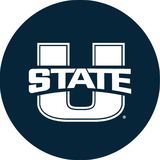
2 minute read
Bioregional Planning Studio
Planning for Net-Zero Carbon in Park City, Utah
Students in the Bioregional Planning (BRP) studio embarked on a challenging project in the Fall 2017 and Spring 2018 semesters. Funded by Park City and working under the guidance of Celia Peterson and Luke Cartin in the Sustainability Department, the students developed Alternative Futures for Park City that examine future growth in the context of the region, while exploring the opportunities and challenges of meeting the net-zero carbon objectives of Park City.
Advertisement
Park City has established the ambitious goal of achieving net-zero carbon emissions by 2022 for municipal operations and 2032 for the whole community. In other words, Park City plans to balance its carbon emissions budget for the city operations in five years. They are one of the forerunner communities in the country that is actively exploring ways to sequester as much CO2 as they produce. LAEP students had the opportunity to contribute to that effort through a bioregional planning study of Park City and the surrounding Summit County.
Starting with questions like: “What does carbon sequestration mean? How does one map or model the potential for CO2 sequestration? What does a carbon conscious community look like?”, the students researched and interviewed experts about how to identify and protect areas of existing carbon storage as well as how to develop areas for sequestering carbon in the future and strategies for reducing carbon emissions in Park City and surroundings.

Students prepare to board their flight for an aerial assessment of their project area
Over the span of two semesters, the students benefited from the input of local stakeholders, university experts, the Bioregional Planning Forum experts, and members of the faculty and Advancement Board. A highlight was a two-day geodesign workshop in Park City with local decision makers, which the students prepared and participated in at the end of February. The workshop gave the students insight into how local stakeholders think about their community and how decision makers reach planning decisions. Furthermore, the outcome of the workshop helped to inform the three scenarios that students developed into Alternative Futures: “Plan Trend” that followed existing development trends; “Locals first” that focused on building strong local communities; and “Come and Play” that addressed the objectives of the tourism and recreation economy.
The Alternative Futures encompassed Park City and the surrounding communities that are interwoven with the goals and objectives of Park City. The students faced the challenge of unraveling the complexity of the social, ecological and economic systems associated with reducing carbon emissions. Each Future made recommendations about protecting the existing carbon sink and strategies to reduce the generation of CO2 emissions in the rural, suburban and urban context. For example, a few of the suggestions included: cluster recreational opportunities, no net-loss of current agricultural land, connect public transportation to housing, placemaking in downtowns.
“The students should be commended on their perseverance in the face of this challenging project. Their work at the bioregional planning scale lays the ground work for future studios that can dig deeper and contribute to finding solutions to one of the biggest problems of our future: climate change,” noted Professor Barty Warren- Kretzschmar.

Graduate student Lara Gale talks to local residents about the alternative futures.
Department of Landscape Architecture & Environmental Planning | InSites 2018










